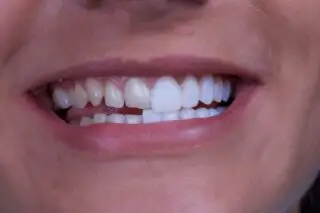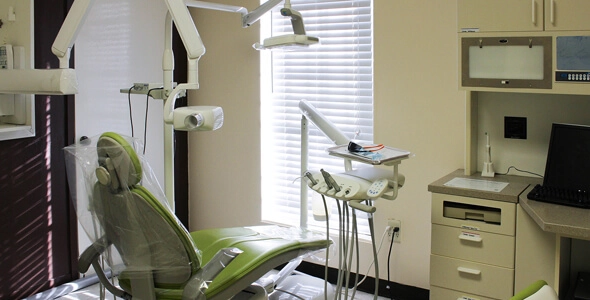Bonding vs Veneers: How to Choose the Best Solution for the Perfect Smile
According to the American Dental Association, most people are unhappy with the appearance of their smile. If you feel this way, cosmetic dentistry allows you to make the changes you desire. Two of the most popular cosmetic procedures at A Dental Care are dental bonding and dental veneers.
In this article, we’ll explore the differences and similarities between these two to help you decide which one best meets your needs.
What is Dental Bonding?
Dental bonding, also known as teeth bonding or composite bonding, is a popular cosmetic dental procedure used to improve the appearance of teeth. This procedure involves the application of composite resin to the affected teeth to:
- Repair chips/cracks
- Close small gaps
- Conceal discoloration
- Change the size and shape
This is the same type of resin that is used in tooth-colored fillings and to protect tooth roots that are exposed due to receding gums.
What are Dental Veneers?
Dental veneers are tooth-colored shells that are placed over teeth to improve their appearance. This is another popular cosmetic dental procedure. While bonding can be used on all teeth, veneers are most commonly used on the top front 6 to 8 teeth that are visible when smiling.
Veneers can be made of porcelain or composite resin and offer the same results as bonding:
- Repairs chips/cracks
- Closes small gaps/spaces
- Conceals discoloration
- Changes size and shape
In order for veneers to be placed, some of the enamel needs to be removed from the affected tooth.
Difference between Bonding vs Veneers
While dental bonding and dental veneers have virtually the same purpose, there are some differences to consider. Below, we’ll take a closer look at the 7 factors to consider when choosing between these two options:
7 Factors to Consider When Choosing Between Bonding and Veneers
If you are trying to decide between dental bonding and dental veneers to treat your cosmetic concerns, there are a few things you need to keep in mind:
Cost
The cost of dental bonding ranges from around $300 to $600 per tooth, depending on the extent of the treatment, the location of the tooth, the location of the dental clinic, and the experience/expertise of the dentist.
The cost of dental veneers ranges from around $400 to $1,300 per tooth. Composite resin is on the lower end and porcelain is on the higher end. However, it is important to note that composite resin is more durable but will not last as long as porcelain.
It is important to note that both are cosmetic procedures and therefore considered an elective procedure. This means that most dental insurance providers will not cover treatment. However, we do offer financing options to help you afford your dental procedures.
Time
Dental bonding can usually be completed within one appointment. On average, it takes about 30 minutes to an hour per tooth.
Veneers can be done in 1 or 2, depending on the type of veneer. Porcelain veneers usually take 2 appointments because they are fabricated in an offsite lab. Composite resin veneers may be made in an offsite dental lab- but they may also be made in-house or the resin can be directly applied to the affected teeth.
Maintenance
Both dental bonding and dental veneers must be properly cared for. The best way to care for your restorations is with proper oral hygiene habits. This includes brushing at least twice daily and flossing at least once. You may want to use alcohol-free mouthwash to reduce bacteria and plaque buildup.
In addition, you should visit the dentist every 6 months for an exam and cleaning. This will allow us to monitor your oral health and the success of your restoration- as well as make any repairs and take care of replacements as necessary.
Durability
Dental bonding usually lasts about 3 to 10 years, depending on your oral care habits.
The durability of dental veneers depends on the material. Composite veneers last an average of 5 to 7 years- but may last up to 10 or more with proper care and maintenance. Porcelain veneers, on the other hand, last an average of 10 to 15 years, but may last up to 20 years or more with proper care and maintenance.
In order to increase the longevity of either option, it’s important to practice proper oral hygiene, avoid chewing ice, avoid using teeth as tools, quit smoking, and avoid grinding teeth.
Goals
The goals of dental bonding and dental veneers are the same: to improve the appearance of teeth that are oddly shaped, gapped, discolored, or cracked/chipped.
Material Used
Composite resin is used for dental bonding, which is the same material used for tooth-colored dental fillings. Dental veneers may be made of composite resin or porcelain, depending on your preferences.
Cosmetic Issues
Both dental bonding and dental veneers address several cosmetic concerns including:
- Size/shape of teeth
- Discoloration
- Cracks/chips in teeth
- Small gaps/spaces between teeth
However, you should know that the materials used in these treatments cannot be whitened. Therefore, if you want whiter teeth, you should have this done before you have either procedure done to ensure the best match.
Conclusion
If you are unhappy with the appearance of your smile and you’re considering cosmetic dentistry, schedule your appointment with the team at A Dental Care today. We have five offices conveniently located around Houston. We can help you create the smile you’ve always dreamed of.
In addition to cosmetic procedures, we offer a wide variety of preventive and restorative dental services for the entire family. If you are a new patient, check out our new patient forms. Fill them out ahead of time to expedite your first visit.












